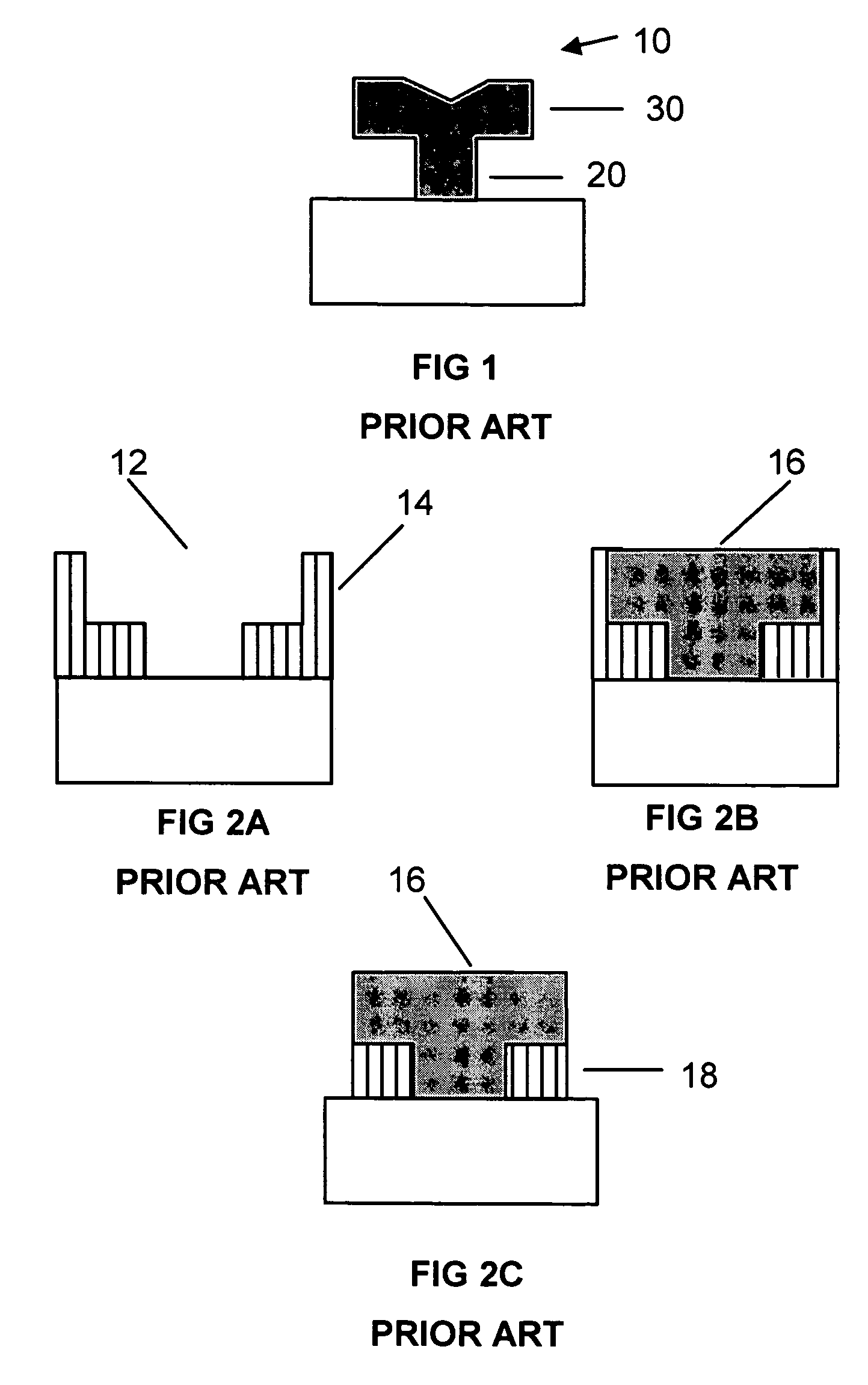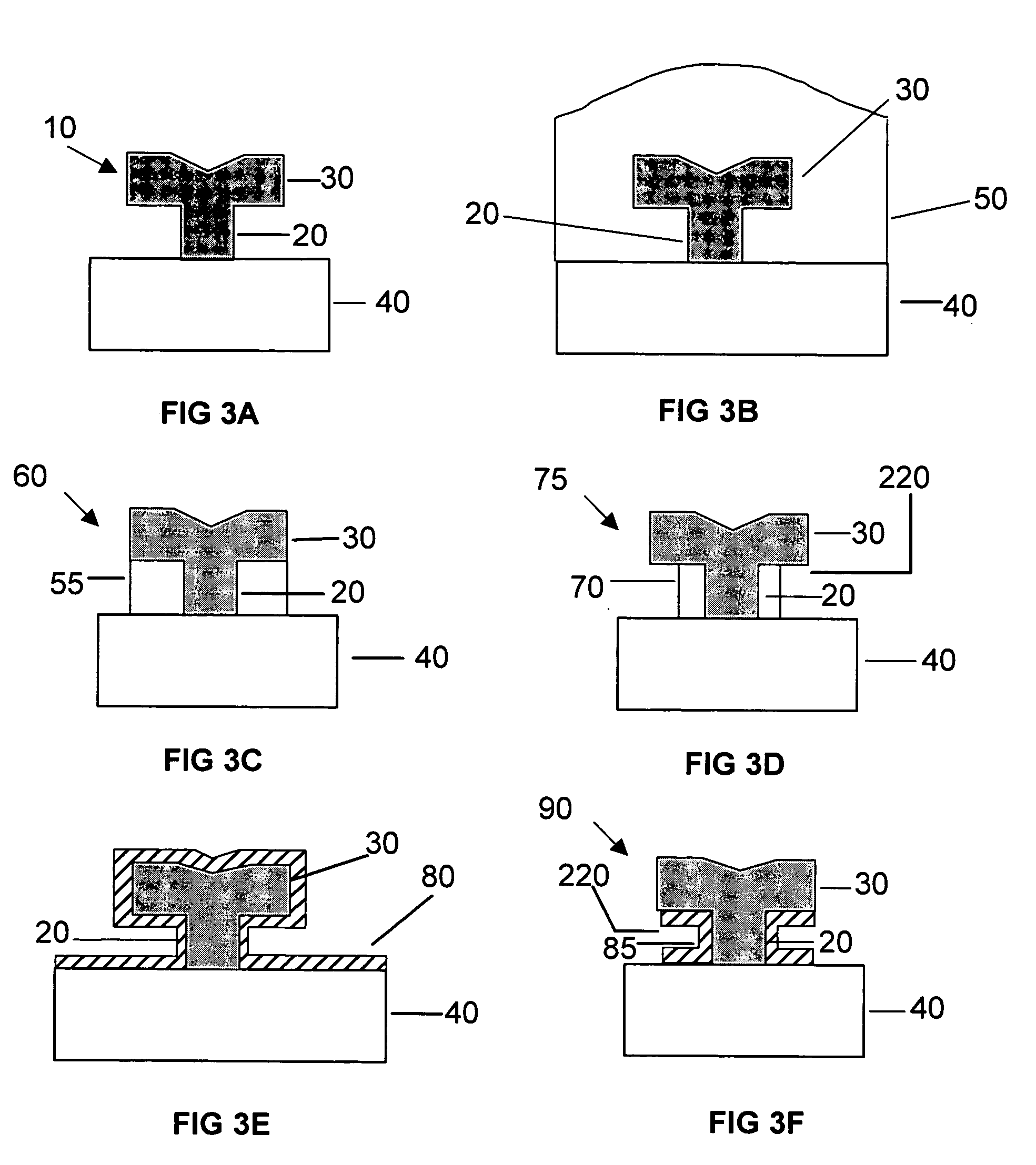Enhanced T-gate structure for modulation doped field effect transistors
a field effect transistor and modulation doped technology, applied in the field of modulation doped field effect transistors, can solve the problems of increasing gate resistance, increasing the complexity of technology, and needing new methods, so as to reduce parasitic capacitance, improve yield, and high scalable
- Summary
- Abstract
- Description
- Claims
- Application Information
AI Technical Summary
Benefits of technology
Problems solved by technology
Method used
Image
Examples
Embodiment Construction
[0029]FIG. 1 shows prior art in a cross-sectional view of a free (freestanding) T-gate 10 formed by conventional processing. T-gates are typically formed using a stack of metals, e.g. Ti / Pt / Au for state-of-the-art Si / SiGe p-MODFETS, where Ti is used for the gate contact because of its high Schottky barrier on p-type Si. Alternate gate stacks may be used depending on the gate work function desired. For example, the T-bar and neck portions of the T-gate may be formed from any conductive material, including metals (for example Al, Au, Co, Ir, Mo, Nb, Ni, Pd, Pt, re, Ru, Ti, Ta, and W), conductive nitrides and silicides; layers of these materials, combinations of these materials. The T-gate has a neck portion 20, which rests on the surface that the whole T-gate is standing on. The neck portion is topped by the T-bar portion 30. The T-bar portion has overhangs which extend beyond the neck portion by a certain width. There is an empty volume under the overhang, bounded on three sides by t...
PUM
 Login to View More
Login to View More Abstract
Description
Claims
Application Information
 Login to View More
Login to View More - R&D
- Intellectual Property
- Life Sciences
- Materials
- Tech Scout
- Unparalleled Data Quality
- Higher Quality Content
- 60% Fewer Hallucinations
Browse by: Latest US Patents, China's latest patents, Technical Efficacy Thesaurus, Application Domain, Technology Topic, Popular Technical Reports.
© 2025 PatSnap. All rights reserved.Legal|Privacy policy|Modern Slavery Act Transparency Statement|Sitemap|About US| Contact US: help@patsnap.com



